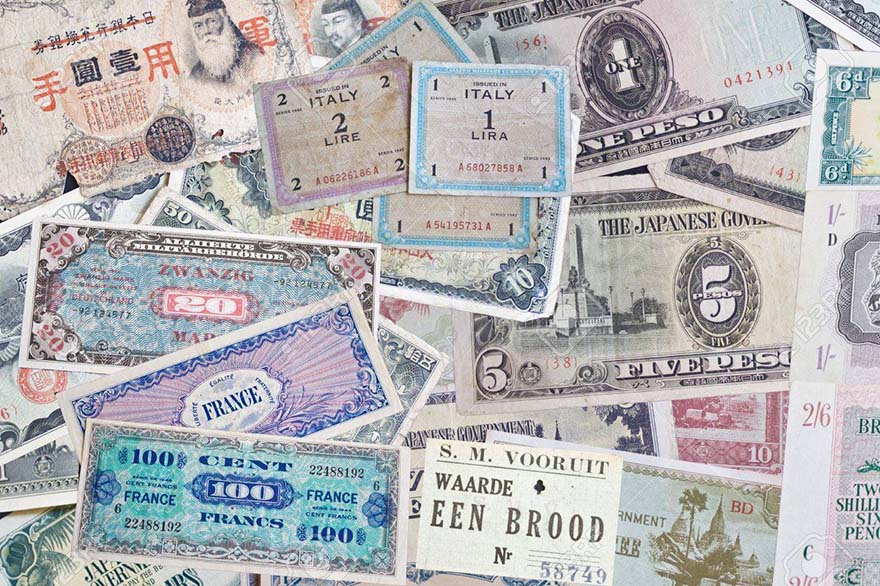Las siguientes son algunas de las piezas exclusivas incluidas en la colección de billetes originales de la Segunda Guerra Mundial.
10 rupias, 1942, Birmania
Emitida para su uso en Birmania, pertenece a lo que se denomina "moneda de invasión japonesa" (JIM). Los japoneses, a medida que invadían territorios, emitieron este tipo de moneda en Birmania (actual Myanmar), Malasia (Malasia y Singapur), las Indias Orientales, Oceanía y Filipinas.

5 puntos. Alemania
Para controlar la inflación y limitar la circulación de la moneda, se creó un nuevo tipo de moneda, denominada «Reichskreditkassenschein», para su uso en los territorios ocupados por las fuerzas de Hitler. En la práctica, esto se tradujo en la transferencia de los costes de la ocupación a la nación ocupada. Estos billetes se emitieron entre 1939 y 1945.
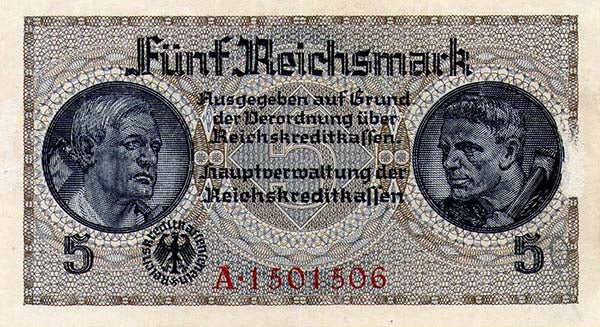
5 yenes. Japón
Conocido como yen militar japonés, en sus inicios fue la moneda emitida para pagar los salarios de los soldados japoneses. En parte de China y en Hong Kong, durante la ocupación japonesa, la población local se vio obligada a utilizarlo como moneda oficial a partir de 1938. Después de la guerra perdió todo valor. En junio de 1999, un tribunal japonés desestimó una demanda que reclamaba la devolución del yen militar japonés.
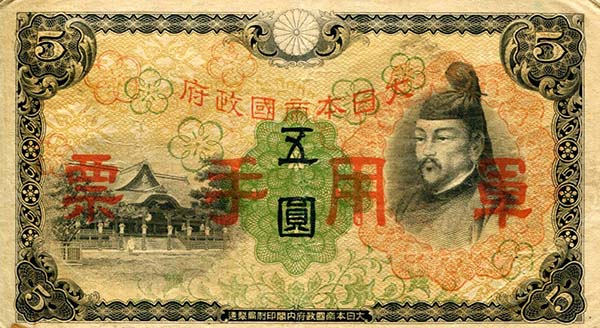
100 Korum. Bohemia y Moravia
En marzo de 1939, los nazis alemanes crearon el protectorado de Bohemia-Moravia tras la ocupación militar de Checoslovaquia. Este billete se emitió en agosto de 1940 y todas las inscripciones están en alemán y checo.
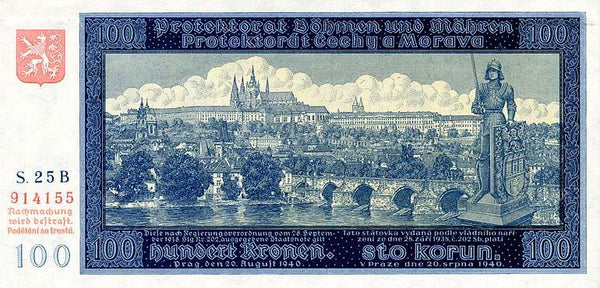
1 libra. Reino Unido
Este billete es en realidad un vale especial emitido por las fuerzas armadas británicas en 1948 para su uso por parte de las tropas británicas estacionadas en Alemania después de la Segunda Guerra Mundial. Su uso estaba restringido a los comedores y lugares sujetos a las regulaciones del ejército, independientemente de dónde se llevaran a cabo las operaciones.

2000 dracmas. Grecia
Emitido durante la ocupación alemana. La inflación era terrible y su valor real era de 200.000.000 de dracmas.

100 dinares. Serbia
Se imprimió originalmente en 1929. Después de la invasión nazi se sobreimprimió con la inscripción "Banco Nacional de Serbia" en caracteres cirílicos.

100 kunas. Croacia
Kuna significa marta cibelina en croata. La kuna no tiene relación con otras monedas llamadas "coronas". Su nombre proviene de la Edad Media, cuando se utilizaban pieles de marta cibelina como unidades de valor.

5 rupias. India.
En 1992, en el interior del SS Breda, un buque de la Armada británica hundido en 1940, un grupo de buceadores hizo un descubrimiento sorprendente. En uno de los contenedores encontraron papel, pero no cualquier papel, sino papel de alta calidad que se utiliza para imprimir billetes. Increíblemente, aunque las cajas estaban carcomidas y los bordes de las hojas estaban rasgados, la mayor parte del contenido estaba en condiciones de uso. Portals, una empresa propiedad del Banco de Inglaterra, había fabricado este papel especial con marca de agua con el retrato del rey Jorge VI en 1940 para imprimir billetes de la India, pero nunca llegaron a su destino.

1 peso. Filipinas
Segunda emisión de la "moneda de la ocupación japonesa" en Filipinas. Curiosamente, con el monumento al político y escritor nacionalista José Rizal como motivo principal.

1 peso. Guerrilla filipina
Un curioso billete impreso por las guerrillas filipinas, que llegaron incluso a emitir su propio papel moneda. El gobierno japonés, en su afán por acabar con su circulación en la isla, llegó a castigar su mera posesión con la pena de muerte.
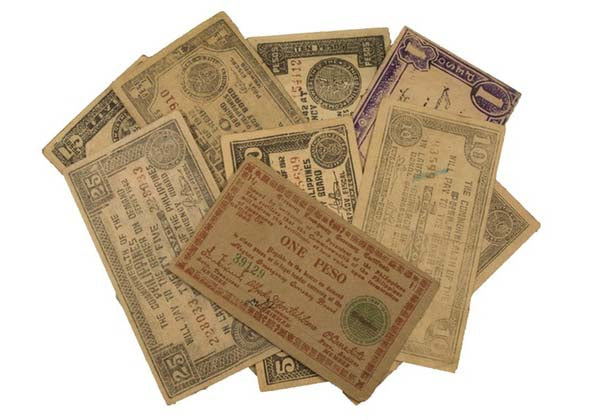
10 dólares, 1943, Malasia
Curiosamente, los japoneses incluso emitieron dólares, aunque eran dólares malayos, durante su invasión.


